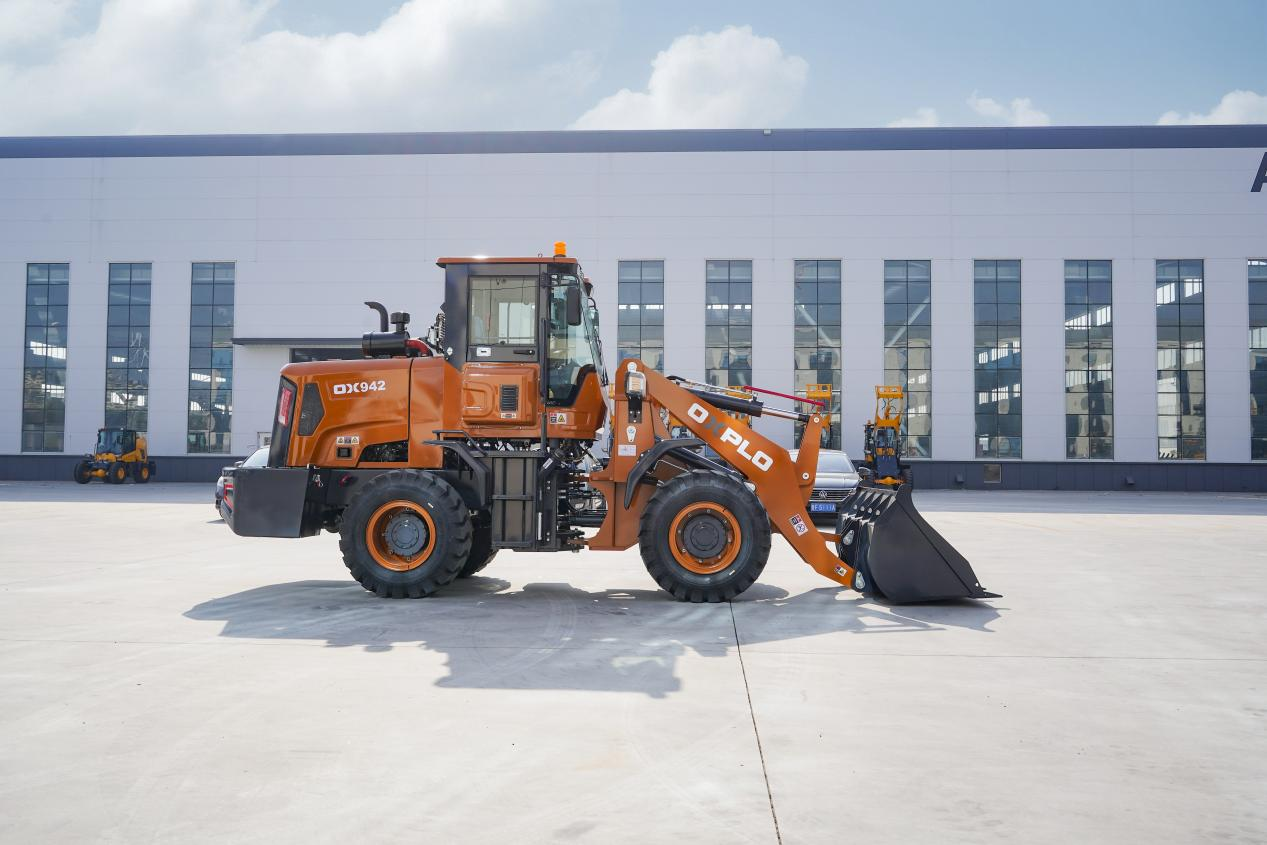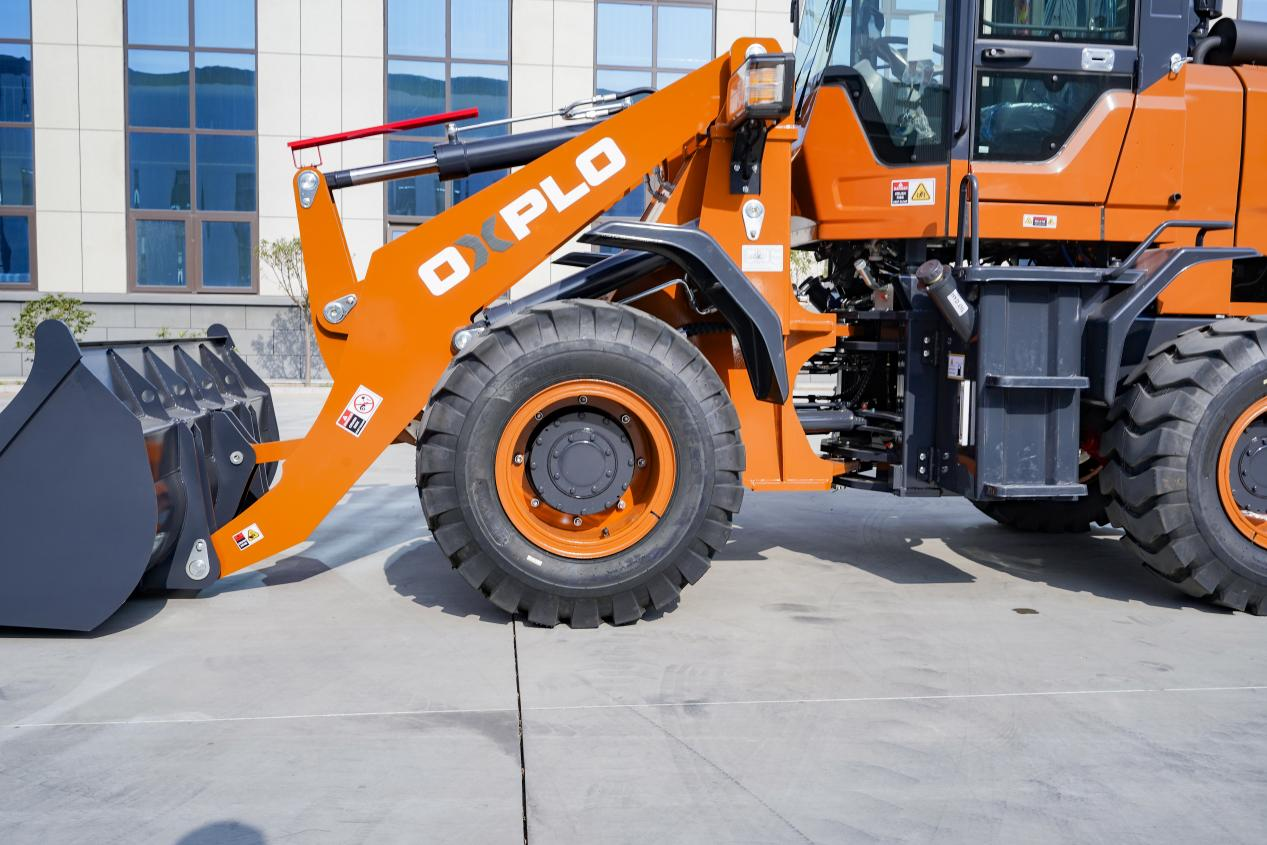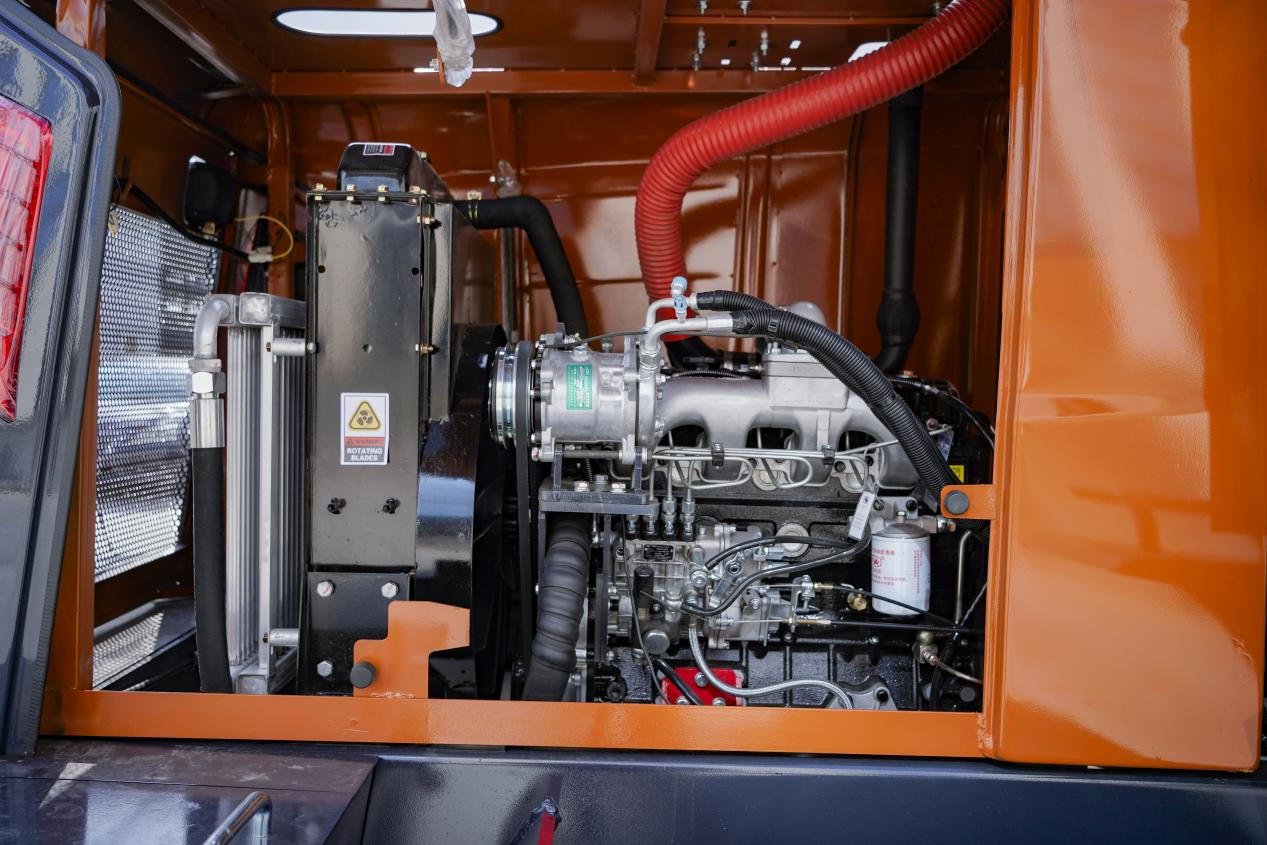Loader tips
2024-01-31
Speaking of wheel loader accessories, I believe that everyone will first think of the engine, hydraulic system, etc. In addition, what other loader accessories do you know? Today, the Chinese loader manufacturer OXPLO brand will take you to understand the other accessories of wheel loaders.

1. Air compressor: The main function of air compressor is to produce compressed air and compress the air in the atmosphere to a higher pressure. This compressed air can be used to supply pneumatic tools and equipment on the loader. Compressed air can also be used as a power source to drive some starting systems and functions on the loader, such as air brakes, pneumatic suspension, etc. Helps control and improve loader operation and performance. By being equipped with an air compressor, wheel loaders can generate the required compressed air on site without relying on an external air supply, which improves the flexibility and efficiency of work and reduces the waste of time and resources.
2. Pressure regulator: The pressure regulator can adjust and control the pressure of the gas or liquid flowing through the loader as needed, and it can limit or adjust the pressure to ensure that the pressure in the system is maintained within an acceptable range. The regulator also protects the system from excessive pressure damage. When the pressure in the system exceeds the set safe value, the regulator automatically opens and releases the excess pressure to protect the integrity and safety of the system and related equipment. The regulator can also stabilize the pressure in the system and prevent fluctuations from causing adverse effects on the system. It eliminates pressure spikes and pressure fluctuations, allowing the system to run smoothly.

3. Multi-loop pressure safety valve: The multi-loop pressure safety valve on the wheel loader is a safety device used to protect the hydraulic system. The pressure in the hydraulic system can be limited to ensure that the pressure is kept within a safe range. When the pressure in the system exceeds the set safe value, the safety valve will automatically open and release the excess pressure to prevent the system from being damaged by high pressure. The multi-loop safety valve also protects the system from excessive pressure due to failure or other abnormal conditions. For example, if a circuit in the hydraulic system is blocked or otherwise faulty, resulting in a sharp rise in pressure, the safety valve will be opened in time to release excess pressure and avoid system damage or accidents.
4. Brake valve: The brake valve can control the size of the brake force of the wheel loader, and by adjusting the position and switch of the brake valve, the braking force applied by the brake system can be increased or reduced. This allows the driver to adjust the size of the braking force as needed to adapt to different road conditions and operational requirements. The brake valve also regulates the pressure of the brake system. It can control the transfer and distribution of pressure in the hydraulic system, ensuring the balance and stability of the individual brake circuits. This helps provide reliable braking performance and ensures the braking effect is consistent across all wheels. The function of the brake valve can also be used to optimize the transmission and application of the brake force. By adjusting the working mode of the brake valve reasonably, the response sensitivity of the brake system and the smooth output of the brake force can be ensured. This helps to increase braking rate, reduce braking distance, and provide better driving control and safety.

5. Manual brake valve: The manual brake valve on the wheel loader is a hand-operated device used to control and operate the brake system. By manually operating the control valve, the driver can increase or decrease the braking force applied by the braking system, which allows the driver to adjust the size of the power according to the need to adapt to different road conditions and operational requirements. Manual brake valves can also be used to separate different brake circuits, for example some loaders may be equipped with separate brake systems for front and rear wheel braking. Through the manual brake valve, the driver can selectively activate the front wheel brake or the rear wheel brake to meet specific braking requirements. The manual brake valve can also be used for emergency braking, when an emergency occurs, the driver can quickly operate the manual brake valve to apply maximum braking force to slow down or stop the wheel loader as soon as possible. This provides a quick-response emergency braking measure to ensure the safety of the driver and the surrounding environment.
6. Relay valve: Relay valve is used to control the pressure in the hydraulic system. It can set the maximum working pressure of the system, and when the pressure in the system exceeds the set value, the relay valve will open and direct the excess pressure back to the tank to prevent system overload and damage. The relay valve can also stabilize the pressure in the system and prevent pressure fluctuations from adversely affecting the system. It can eliminate pressure peaks and pressure fluctuations and maintain the stable operation of the system. Relay valves also protect the hydraulic system from excessive pressure damage. When the pressure in the system exceeds the safe range, the relay valve automatically opens to release excess pressure and avoid system damage or accidents.

7. Quick release valve: Quick release valve is used to quickly release pressure in the hydraulic system. It allows the operator to quickly open the valve and quickly release the pressure in the system for quick recovery or emergency shutdown requirements. Quick release valves are usually used in hydraulic braking systems to control brake release and brake force regulation. By operating the quick release valve, the driver can quickly release the pressure of the brake, and realize the release of the brake and the driving of the vehicle.




